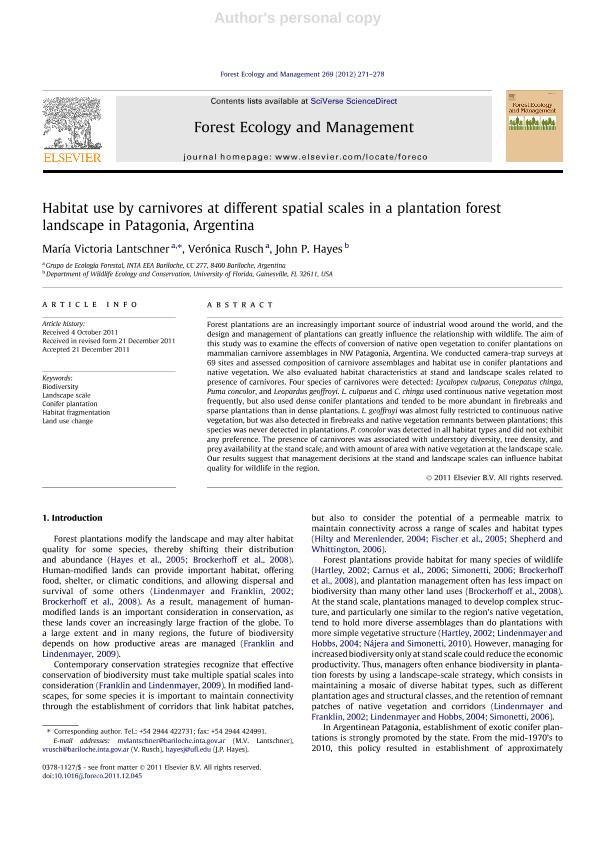Artículo
Habitat use by carnivores at different spatial scales in a plantation forest landscape in Patagonia, Argentina
Fecha de publicación:
04/2012
Editorial:
Elsevier Science
Revista:
Forest Ecology and Management
ISSN:
0378-1127
Idioma:
Inglés
Tipo de recurso:
Artículo publicado
Clasificación temática:
Resumen
Forest plantations are an increasingly important source of industrial wood around the world, and the design and management of plantations can greatly influence the relationship with wildlife. The aim of this study was to examine the effects of conversion of native open vegetation to conifer plantations on mammalian carnivore assemblages in NW Patagonia, Argentina. We conducted camera-trap surveys at 69 sites and assessed composition of carnivore assemblages and habitat use in conifer plantations and native vegetation. We also evaluated habitat characteristics at stand and landscape scales related to presence of carnivores. Four species of carnivores were detected: Lycalopex culpaeus, Conepatus chinga, Puma concolor, and Leopardus geoffroyi. L. culpaeus and C. chinga used continuous native vegetation most frequently, but also used dense conifer plantations and tended to be more abundant in firebreaks and sparse plantations than in dense plantations. L. geoffroyi was almost fully restricted to continuous native vegetation, but was also detected in firebreaks and native vegetation remnants between plantations; this species was never detected in plantations. P. concolor was detected in all habitat types and did not exhibit any preference. The presence of carnivores was associated with understory diversity, tree density, and prey availability at the stand scale, and with amount of area with native vegetation at the landscape scale. Our results suggest that management decisions at the stand and landscape scales can influence habitat quality for wildlife in the region.
Archivos asociados
Licencia
Identificadores
Colecciones
Articulos(CCT - PATAGONIA NORTE)
Articulos de CTRO.CIENTIFICO TECNOL.CONICET - PATAGONIA NORTE
Articulos de CTRO.CIENTIFICO TECNOL.CONICET - PATAGONIA NORTE
Citación
Lantschner, María Victoria; Rusch, Verónica; Hayes, John P.; Habitat use by carnivores at different spatial scales in a plantation forest landscape in Patagonia, Argentina; Elsevier Science; Forest Ecology and Management; 269; 4-2012; 271-278
Compartir
Altmétricas




